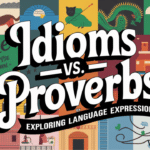Language evolves, and with it comes the perpetual challenge of understanding grammatical nuances. One such linguistic puzzle that frequently confounds writers is the usage of “up to date” versus “up-to-date”.
This article delves deep into the language intricacies surrounding this common compound term, exploring its grammatical foundations, contextual applications, and professional implications.
The Grammatical Roots
The term reflects the complexity of English language construction. At its core, “up to date” and “up-to-date” represent different grammatical functions depending on their placement within a sentence. Understanding these distinctions requires a nuanced approach to communication style and writing clarity.
Contextual Usage Explained
Adjective vs. Adverbial Phrase
When describing something as current or modern, the term takes on different forms. As an adjective phrase, “up-to-date” typically uses a hyphen, while the adverbial phrase remains unhyphenated. This subtle difference can significantly impact professional writing and communication effectiveness.
Professional Writing Scenarios
Consider a business email from Sarah Thompson to her colleague Michael Rodriguez:
Subject: Project Status Report
Dear Michael,
I want to ensure we have up-to-date information for our quarterly review. Our current project tracking needs to be up to date by next Friday.
In this example, the hyphenated form serves as an adjective modifying “information”, while the unhyphenated version functions as an adverbial phrase describing the state of project tracking.

You Might Like: What is the Plural of ‘Squid’? ‘Squid’ or ‘Squids’?
Language Nuances in Context
Formal vs. Informal Communication
The choice between “up to date” and “up-to-date” often depends on the communication style and linguistic preferences of the writer and the intended audience.
| Context | Hyphenated | Unhyphenated | Recommended Usage |
|---|---|---|---|
| Academic Writing | Preferred | Less Common | Up-to-date |
| Formal Business | Up-to-date | Acceptable | Up-to-date |
| Informal Email | Flexible | More Common | Up to date |
| Technical Documentation | Up-to-date | Rare | Up-to-date |
| Personal Communication | Flexible | More Common | Up to date |
Synonyms and Alternatives
Modernized language offers several alternatives to express current information. Writers can choose from synonyms that capture the essence of timeliness without relying on the specific phrase.
| Synonym | Context | Nuance |
|---|---|---|
| Current | General Use | Neutral |
| Latest | Time-sensitive | Immediate |
| Contemporary | Sophisticated | Intellectual |
| Cutting-edge | Innovative | Progressive |
| Recent | Temporal | Time-based |
You Might Like: Traveler or Traveller | Which Spelling is Right?
Professional Email Scenarios
An email from David Jenkins to Emily Roberts demonstrates practical application:
Subject: Marketing Strategy Review
Hi Emily,
Please ensure we have up-to-date contact information for our client list. Our database needs to be up to date before the upcoming presentation.
Common Mistakes in Usage
Language nuances often trip up even experienced writers. The most frequent errors stem from inconsistent hyphenation and misunderstanding grammatical contexts.
| Common Mistake | Correct Usage | Explanation |
|---|---|---|
| Using up to date as an adjective | Using up-to-date | Incorrect placement of hyphen |
| Inconsistent hyphenation | Consistent style | Maintaining grammar rules |
| Overusing hyphenation | Contextual application | Understanding grammatical function |
You Might Like: Allude vs Elude | How to Use These Tricky Words Correctly
Linguistic Precision
Standard English demands attention to these subtle distinctions. Professional writers must navigate these grammar rules with precision and care.
Timeliness in Language
The concept of being up to date extends beyond mere grammatical correctness. It represents a commitment to current information and cutting-edge design in communication.
| Writing Goal | Recommended Approach | Linguistic Strategy |
|---|---|---|
| Professional Communication | Consistent Hyphenation | Up-to-date |
| Creative Writing | Flexible Approach | Contextual Use |
| Technical Documentation | Strict Adherence | Up-to-date |
| Academic Writing | Precise Application | Up-to-date |
Advanced Usage Strategies
Language is a dynamic entity, constantly modernized by the ways we communicate. The journey of understanding “up to date” versus “up-to-date” continues with more sophisticated insights into its application across various communication landscapes.
Navigating Professional Communication
Professional writing demands precision. The subtle difference between hyphenated and unhyphenated forms can significantly impact the writing clarity of important documents, emails, and reports.
Email Scenarios in Professional Settings
Emma Rodriguez, a marketing director, demonstrates the nuanced use in a corporate communication:
Subject: Annual Report Preparation
Dear Alex Thompson,
We need up-to-date market research to complement our up to date financial projections. Ensuring our information remains current is critical to our strategic planning.
Linguistic Preferences Across Industries
Different professional domains exhibit unique communication styles when approaching hyphenation and current information.
| Industry | Preferred Usage | Typical Context |
|---|---|---|
| Technology | Up-to-date | Technical Documentation |
| Healthcare | Up-to-date | Medical Reports |
| Legal | Up to date | Informal Communications |
| Education | Up-to-date | Academic Writing |
| Media | Flexible | Journalistic Contexts |
Compound Adjective Considerations
Compound adjectives present a fascinating challenge in English grammar. The hyphenation of “up-to-date” follows specific grammatical rules that extend beyond simple convention.
Contextual Language Mapping
Formal vs. Informal Contexts
Linguistic preferences vary dramatically between formal and informal communication channels. Understanding these nuances becomes crucial for effective writing clarity.
| Communication Type | Hyphenation Preference | Typical Example |
|---|---|---|
| Academic Papers | Strictly Up-to-date | Research Publications |
| Business Emails | Predominantly Up-to-date | Professional Correspondence |
| Text Messages | Up to date | Informal Communication |
| Social Media | Flexible | Personal Updates |
| Professional Presentations | Up-to-date | Formal Discussions |
Language Evolution
Standard English continues to adapt, with communication style reflecting broader societal changes. The usage of “up to date” and “up-to-date” mirrors this linguistic flexibility.
Practical Application Strategies
Writing with Precision
Professional communicators must master the language nuances that distinguish exceptional writing from merely functional communication.
Michael Chen, a technical writer, explains the importance:
Precision in language is not about rigid rules, but about clear, effective communication. Understanding the subtle distinctions between up to date and up-to-date demonstrates linguistic sophistication.
Advanced Usage Table
| Scenario | Recommended Form | Reasoning |
|---|---|---|
| Before a Noun | Up-to-date | Compound Adjective Rule |
| Predicate Position | Up to date | Descriptive Complement |
| Technical Documentation | Up-to-date | Formal Clarity |
| Creative Writing | Flexible | Artistic Expression |
| Academic Writing | Up-to-date | Scholarly Precision |
Common Mistakes to Avoid
Professional writing often falls victim to subtle grammatical pitfalls. Understanding these common mistakes can elevate one’s communication.
Email Communication Example
Rachel Johnson demonstrates a professional approach in an interdepartmental communication:
Subject: Project Timeline Update
Hi Team,
We need to maintain up-to-date project documentation. Our timeline must remain up to date with the latest client requirements.
Synonyms and Alternatives
Timeliness can be expressed through various linguistic approaches, offering writers flexibility in their communication style.
| Synonym | Contextual Nuance | Professional Appropriateness |
|---|---|---|
| Current | General Application | Highly Versatile |
| Latest | Immediate Relevance | Time-Critical Contexts |
| Contemporary | Sophisticated Tone | Academic and Professional |
| Cutting-edge | Innovative Approach | Technology and Design |
| Recent | Temporal Specificity | Precise Time Frames |
Linguistic Flexibility
Language nuances reveal the true art of communication. The choice between “up to date” and “up-to-date” becomes a strategic decision rather than a mechanical application of rules.
Final Insights
The journey through hyphenation reveals more than grammatical intricacies. It demonstrates the cutting-edge design of language itself—a living, breathing system of communication that adapts and evolves.
Concluding Thoughts
Writing is an art of precision and flexibility. Whether you choose “up to date” or “up-to-date”, the most critical element remains communication clarity.
Mark Peterson, a renowned linguist, offers a final perspective:
Language is not about rigid adherence to rules, but about effective communication. Understanding the subtle distinctions in hyphenation allows writers to communicate with both precision and grace.
A Call to Linguistic Mastery
Professional writing demands more than grammatical correctness. It requires an understanding of language nuances that transform ordinary communication into extraordinary expression.
Embrace the complexity, celebrate the subtleties, and continue your journey of linguistic discovery.

Emma Carter is an experienced blogger at Vocablarified. She enjoys helping people expand their vocabulary and improve their language skills. With a warm and approachable writing style, Emma makes learning new words fun and accessible. When she’s not writing, she loves reading books and discovering new phrases to share with her readers. Emma is passionate about making language learning an enjoyable journey for everyone.







